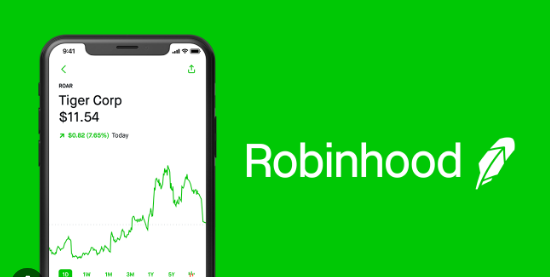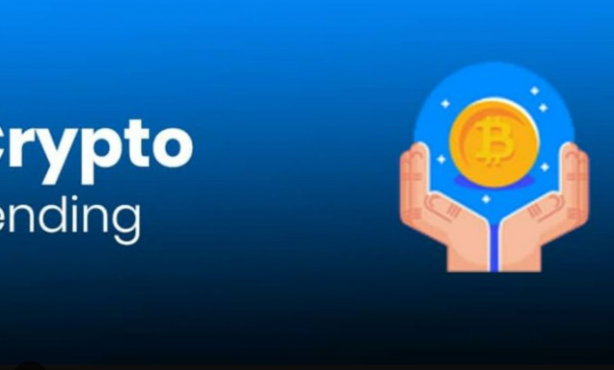Advertisements
Introduction to Cryptocurrency Mining
The world of cryptocurrency has exploded in popularity over the past decade. Cryptocurrencies like Bitcoin and Ethereum operate on blockchain networks that require complex mathematical computations to maintain their distributed ledgers. This process is called mining and is one of the main ways new coins are introduced into circulation.
In the early days of cryptocurrency, anyone with a computer could mine coins pretty easily. But as crypto has grown, mining has become increasingly difficult and competitive. Specialized hardware and access to cheap electricity are now necessary to make mining profitable.
Advertisements
Despite rising difficulty, crypto mining remains appealing to many people around the world. It can be a fun hobby and a potential source of income if done properly. This guide will cover everything you need to know to start mining cryptocurrency in 2023 as a beginner.
Brief History of Cryptocurrency Mining
Cryptocurrency mining originated with Bitcoin, which was first introduced in 2008 by the anonymous creator Satoshi Nakamoto. In the early days, you could mine Bitcoin using just your computer’s CPU. But as Bitcoin grew in popularity, miners moved to using more powerful GPUs and later ASICs to keep up with difficulty.
Many of the top cryptocurrencies today like Ethereum, Litecoin, and Monero also rely on proof-of-work mining to add new blocks to their blockchain. Anyone with the right hardware and software can participate in validating transactions to earn crypto rewards.
How Blockchain Technology Works
Cryptocurrencies are built on decentralized blockchain networks. Blockchains act as digital ledgers that record all transactions on a crypto’s network chronologically in groups called blocks.
In proof-of-work blockchains, miners compete to solve complex math problems to validate a block. The first miner to find the solution and validate the next block earns a crypto coin reward for their efforts.
Advertisements
Solving the math problem is essentially proof that the miner put in computational work, which is how new cryptocurrency is minted on proof-of-work blockchains.
Understanding Proof-of-Work Consensus
Proof-of-work is the OG consensus model that allows cryptocurrencies to operate in a decentralized yet secure manner without requiring a central authority.
Miners put their computing power to work to validate new blocks of transactions and are rewarded with newly minted coins. A higher amount of compute (hash rate) makes a miner more likely to solve a block first and earn its reward.
Proof-of-work ensures that no single person or group has control over what transactions make it onto the blockchain. Instead, miners collectively vote with their hash power.
Understanding the Basics
Now that you have a basic understanding of mining from a high level, let’s get into more of the nitty-gritty details.
What is Crypto Mining?
Cryptocurrency mining is the process of validating blocks of transactions and adding them to a blockchain. Miners use specialized hardware and software to solve the complex math problems required to create new blockchain blocks. They are rewarded for their efforts with cryptocurrency, essentially “minting” new coins into existence.
How Does Crypto Mining Work?
Here are the key steps involved in mining cryptocurrencies:
- Mining software connects to a blockchain network.
- Miners download the current block data and start trying to solve its proof-of-work problem.
- Miners make repeated guesses called hashing to try to find the solution.
- The first miner to get the right hash validates the block and broadcasts it to the network.
- The network verifies the block and adds it to the blockchain.
- The miner who validated the block is rewarded with newly minted crypto.
This cycle repeats endlessly as miners validate new blocks and earn block rewards and transaction fees.
Hardware and Software Requirements
Cryptocurrency mining requires dedicated hardware designed specifically for the task. In the early days, you could mine with a regular CPU or GPU. But today application-specific integrated circuits (ASICs) are required for any profitable mining.
You’ll also need mining software compatible with your hardware setup. The software connects your hardware to a mining pool and blockchain network. It also monitors your miner and can be optimized as needed.
Mining Pools vs. Solo Mining
Mining pools allow miners to pool their resources together and share block rewards. They provide more consistent payouts by smoothing out the luck element. Solo mining means validating blocks completely by yourself without splitting rewards.
Pools are the way to go for 99% of miners. Solo mining is generally only done by large operations with tons of hash rate. Even then the inconsistent payouts make it risky.
Cloud Mining Services
Cloud mining enables you to rent hash power from data centers that do the actual mining. You pay them monthly for the hashing power and get to keep a percentage of any coins mined.
Cloud mining can be a good way to get exposure to crypto mining without running your own hardware. But watch out for scams and conduct thorough due diligence.
Choosing the Right Cryptocurrency to Mine
With hundreds of cryptocurrencies out there, how do you pick the best coin to mine in 2023? Here are the most important factors to consider when selecting a coin for mining.
Most Profitable Coins to Mine
The most profitable coin is always changing based on factors like price, difficulty, block rewards, and hardware. But these are top contenders for 2023:
- Bitcoin (BTC) – The #1 cryptocurrency but requires expensive ASICs.
- Ethereum (ETH) – Moving to proof-of-stake but still profitable for some miners.
- Monero (XMR) – Privacy-focused coin ideal for GPU mining.
- Ravencoin (RVN) – ASIC resistant so profitable for GPU miners.
- Flux (FLUX) – New GPU-minable coin with lots of potential.
Factors That Influence Mining Profitability
Consider these factors when choosing a coin to mine:
- Market Price – Higher coin prices mean greater rewards.
- Network Difficulty – How hard it is to validate blocks.
- Hash Rate – Total combined compute power securing the network.
- Block Rewards – Coins awarded to miners for validating blocks.
- Transaction Fees – Fees paid by users to prioritize transactions.
- Equipment Costs – Must factor in your hardware energy and overhead expenses.
Using Mining Calculators
The profitability of mining certain coins constantly changes. Cryptocurrency mining calculators like WhatToMine and CryptoCompare can provide estimates based on your hash rate, power costs, pool fees, and other parameters. This allows you to determine which coin will be the most lucrative.
Selecting Mining Hardware
Specialized mining hardware designed for maximum efficiency is essential to cryptocurrency mining. There are two main options to consider – GPUs and ASICs.
GPUs vs ASICs
Graphics processing units (GPUs) can mine certain coins like Ethereum, Monero, and Ravencoin. They offer more flexibility to switch between assets. Application-specific integrated circuits (ASICs) are designed for a specific algorithm. ASICs mine coins like Bitcoin and Litecoin extremely efficiently, but lack flexibility.
Hash Rate and Efficiency Considerations
Hash rate, measured in megahashes per second (MH/s), indicates how many hash guesses your hardware can make per second. The higher the hash rate, the greater your chances of finding block solutions first. Efficiency is the hash rate divided by power usage. Pick hardware with the ideal hash rate to power efficiency ratio.
Popular Mining Hardware
Here is some of the top mining hardware in 2023:
ASICs:
- Antminer S19 Pro (110 TH/s for Bitcoin)
- Antminer L7 (9.5 GH/s for Litecoin)
- Whatsminer M30S+ (112 TH/s for Bitcoin)
GPUs:
- NVIDIA RTX 3090 (124 MH/s for Ethereum)
- AMD Radeon RX 6900 XT (62 MH/s for Ethereum)
- AMD Radeon RX 6800 XT (57 MH/s for Ethereum)
Tips for Building Mining Rigs
Mining rigs require careful component selection and configuration:
- Choose power supplies (PSUs) that can deliver ample, efficient power.
- Use riser cables for connecting multiple GPUs.
- Ensure proper GPU spacing for airflow.
- Keep rigs cool with fans, ACs, or immersion cooling.
- Run mining operating systems like HiveOS or SimpleMining OS.
- Enable overclocking to boost hash rates safely.
Setting Up Mining Software
To maximize your mining returns, you’ll need to configure software to connect your hardware to a pool and blockchain.
Wallet Creation and Setup
You must have a cryptocurrency wallet to receive payouts. Software options include Exodus, Electrum, and MyEtherWallet. Follow the wallet’s setup guide to create a new wallet address and back up your private keys.
Downloading and Configuring Software
Here are some of the top mining programs:
- CGMiner – Highly customizable ASIC and GPU miner.
- BFGMiner – Modular ASIC/FPGA miner with monitoring tools.
- EasyMiner – User-friendly GUI miner for beginners.
- MinerGate – Convenient but higher fee option.
Enter your wallet address, pool info, and hardware details into your mining program to connect and start hashing.
Joining Pools and Connecting to Networks
Popular mining pools include F2Pool, Ethermine, and Slush Pool. Larger pools offer more frequent but smaller payouts. Enter your wallet address to create a worker and integrate with the pool.
Most software auto-detects networks. Or you can manually select between mainnet and testnets in the settings.
Monitoring and Optimization
View your hash rate, accepted and rejected shares, hardware temps, and other stats in your mining software. Tweak settings like overclocks and fan speeds to optimize performance.
Mining Cryptocurrency on the Cloud
An alternative to buying your own hardware is to lease hashing power via cloud mining.
Overview of Cloud Mining
Cloud mining enables you to pay for coin hashing power from data centers. You get payouts minus fees for all coins mined proportional to your share of the provider’s total hash rate. Contracts can last 6 months to 2 years.
Risks and Rewards
The potential rewards are earning coins without running your own miners. But risks include lower profitability and scam providers who take your money without providing hashing power.
Legitimate Providers vs. Potential Scams
Research providers thoroughly before signing a contract. Legitimate options include CCG Mining, IQ Mining, and Shamining. Look out for fake reviews, too-good-to-be-true returns, missing contact info, and paid shills.
Estimating Profitability
Use calculators to compare expected returns versus costs for cloud mining contracts. Factor in one-time fees, maintenance fees, and the provider’s percentage cut.
Best Practices for Profitable Mining
Follow these tips and best practices to maximize your mining profits.
Keeping Electricity Costs Low
Energy is often the biggest mining expense. Use solar power or move operations to regions with cheap electricity like Washington or Texas to save costs.
Maintaining Optimal Hardware Performance
Regularly clean miners and replace thermal paste to prevent overheating and degradation. Update firmware and replace parts when needed.
Tracking Crypto Market Trends and Prices
Choose coins that are rising or declining in difficulty. Monitor price movements and switch mining coins when profitable.
Tax Considerations and Regulations
Report income from mined coins and deduct expenses. Comply with regulations around mining operations in your jurisdiction.
Joining Mining Collectives and Masternodes
Join groups that pool funds for shared mining initiatives. Run masternodes on proof-of-stake coins to earn rewards helping secure a network.
Emerging Trends Shaping Crypto Mining
Mining is a fast-paced industry with new developments changing the landscape constantly.
New Consensus Models
Some coins are shifting from proof-of-work to proof-of-stake, which eliminates mining entirely. Hybrid models like proof-of-space-time also exist. This impacts the profitability of coins using new models.
Quantum Computers Looming
Quantum computers may one day render current encryption and hashes useless. Quantum-resistant blockchains are being developed to prepare for this possibility.
Specialized Mining Equipment
ASIC developers compete to create more efficient hardware. New form factors like FPGAs also exist. This hardware arms race constantly changes profitability.
Shifting Profitability and Blockchain Forks
Coins often change mining algorithms and forks occur if communities disagree over changes. This leads to unpredictable shifts in mining profitability.
Frequently Asked Questions
Is It Still Worth Mining Cryptocurrency in 2023?
For most small miners, the days of easy profits are over. However, mining can still be profitable with the right investment in efficient hardware and low electricity costs. The higher prices and lower difficulty of newer coins also provide potential profits if approached carefully.
How Much Can I Earn Per Day/Month With Mining?
Total earnings depend on your hash rate, hardware efficiency, electricity cost, pool fees, and the market price and difficulty of the coin you’re mining. Use a profitability calculator to estimate your projected earnings. Expect widely fluctuating returns.
What Are the Main Risks Associated With Crypto Mining?
Top risks include low or negative returns if coin prices drop, paying for scam cloud mining contracts, regulators cracking down on mining, and hackers stealing your crypto. Maintaining hardware can also be challenging.
Which GPU Is Best for Mining in 2023?
The NVIDIA RTX 3090 currently offers the best hash rate for the money. AMD RX 6800 XT and 6900 XT also excel at mining Zcash, Ravencoin, and Ethereum. Compare GPU mining performance on WhatToMine before buying hardware.
Additional Resources for Learning
Interested to learn even more about cryptocurrency mining? Check out these additional helpful resources:
Glossary of Key Terminology
Expand your crypto vocabulary with this glossary of key mining terms.
Hardware and Software Comparison Tables
Use these tables to compare ASIC models, video cards, software features, and more. Helps identify the best options.
Beginner’s Checklist and Tips
Follow this simple beginner’s guide and checklist to avoid mistakes when starting mining.
Recommended Blogs, Forums, and Communities
Join MinerGate’s forum or follow blogs like CoinCentral to stay up to date on mining trends.
Connect with fellow miners in groups like the Bitcoin Mining subreddit or Facebook groups.
Conclusion and Summary
Mining cryptocurrency offers an exciting way to potentially generate revenue while participating in the crypto world. While it has gotten much harder for small independent miners, it can still be possible to profit with the ideal setup and strategy.
The keys are minimizing electricity costs, maximizing hardware efficiency, staying updated on market movements, using calculators to estimate profitability, and avoiding shady cloud mining services.
While rewarding, mining has also gotten extremely competitive. Make sure to do your proper due diligence beforehand.
With the right preparations and considerations taken into account, cryptocurrency mining can be a fun hobby and money-making endeavor in 2023. Just be sure to manage risks and seek the most profitable opportunities available.
The world of mining is complex but can potentially be very rewarding for those who approach it judiciously and intelligently.






